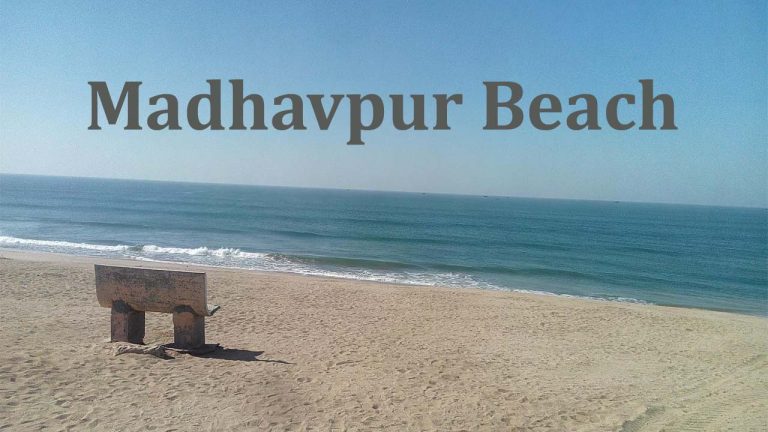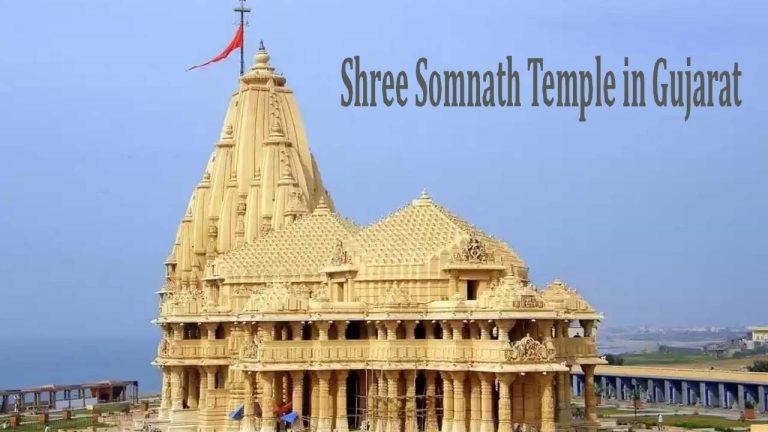The Shree Somnath Temple is on the banks of the Gujarat River, a state near the Arabian Sea at the western end of the Indian subcontinent. One of the oldest pilgrimage sites, it finds mention in Skandapuran, Srimad Bhagwat and Shivpuran. Along with other important holy places like Ganga, Yamuna and Eastern Saraswati, the Rigveda acknowledges the glory of this pilgrimage site.
Somnath is situated in Prabhas Patan, very close to Veraval in the Gir Somnath district. It is believed that Lord Somnath’s blessings brought relief to the Moon, who had been cursed by his father-in-law, Daksha Prajapati. In the Shiv Purana and Nandi Upapurana, Lord Shiva declares, “I am omnipresent, but I am especially present in the form of Jyotirlingas in twelve sacred places.” Somnath is the first among these twelve holy shrines.
It is said that the construction of the Somnath Temple took place in four phases, with gold by Lord Som, silver by Ravi (the Sun), wood by Lord Krishna, and stone by King Bhimadev. It has endured 17 desecrations by Muslim invaders, which has made its existence a symbol of resilience in our society and a testament to our cultural unity.
The current seventh temple is built in the Kailasa Mahameru Prasada style, with Sardar Vallabhbhai Patel being a prominent figure behind its reconstruction. The sanctum sanctorum, assembly hall, and dancing hall are all part of the temple complex, which also has a spire that rises 155 feet in the air.At the pinnacle of the spire, there is a 10-ton Kalash (ornamental finial), and the flagstaff stands 27 feet tall with a circumference of 1 foot. The uninterrupted sea route, the Teerth Stambh (pilgrimage column), hints at an unhindered maritime route to the southern pole.
The nearest landmass in the direction of the southern pole is approximately 9936 kilometers away, signifying the geographical and strategic significance of this ancient Indian knowledge about the Jyotirlinga. Maharani Ahalyabai’s rebuilt temple is near the main temple complex.
Every nook and cranny of Somnath is alive with the glorious journey of Lord Shri Krishna to his heavenly abode. Bhalaka Teerth, the spot where Lord Shri Krishna was shot by an arrow, is revered for its spiritual importance. After being wounded, Lord Shri Krishna traveled in a glorious procession to his dwelling on the serene banks of the Hiranya River. He then reached the holy confluence of the Hiranya, Kapila, and Saraswati rivers.
Here, the Geetamandir stands, where the divine message of the Shrimadbhagavad Gita is inscribed on eighteen marble pillars. Nearby is the Shri Lakshminarayan Temple. Balarama’s Cave is the place from where Lord Balarama, the elder brother of Lord Shri Krishna, embarked on his journey to his celestial abode. Parashurama’s Tapobhumi is the sacred ground where Lord Parashurama performed penance and attained liberation from the sin of slaying the Kshatriyas. It is believed that the Pandavas visited this place, bathed in the holy waters of Jalprabha, and constructed five Shiva temples.
those are the enormous factors of the sacred and historic site of Somnath, a testomony to the rich history and non secular intensity of India.












+ There are no comments
Add yours